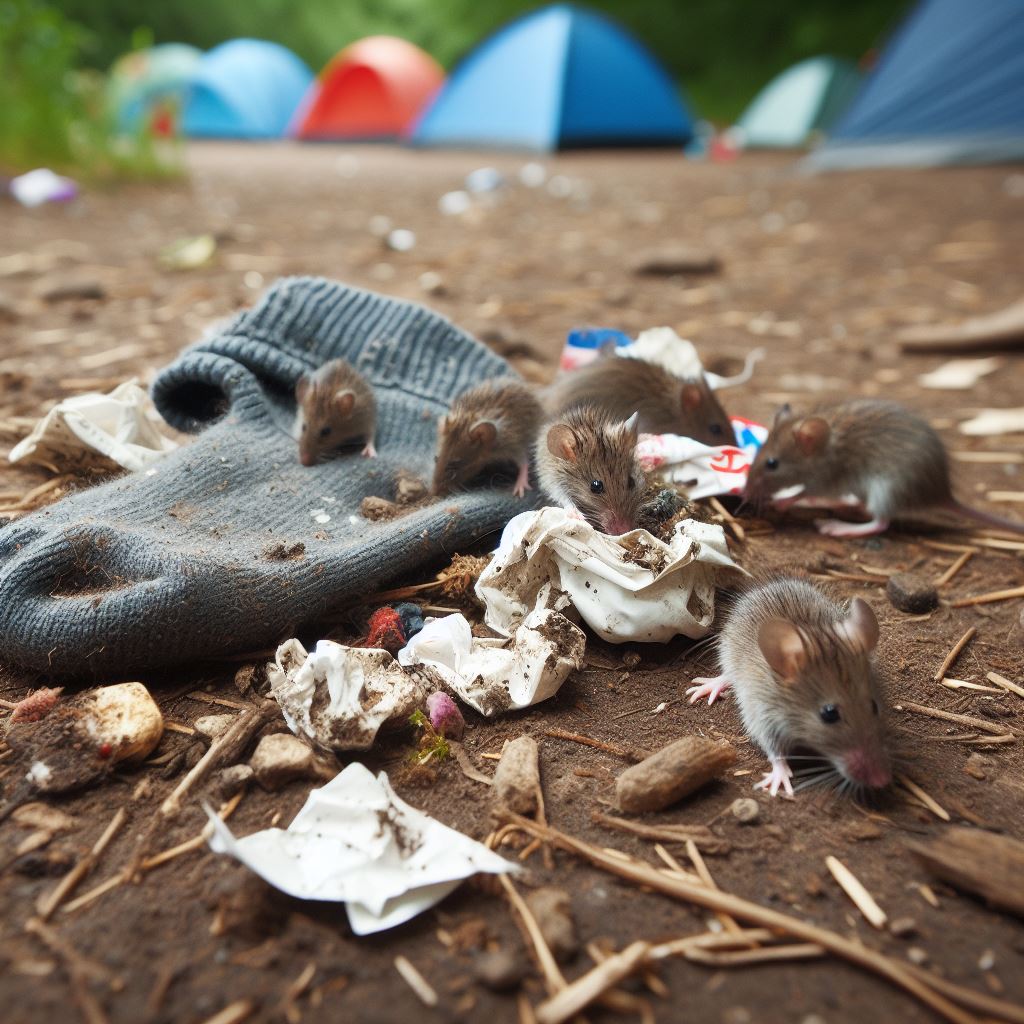Developers As Testers And Boy Scouts Cleaning Up A Campsite
Testing your code and cleaning the campsite, a comparison learned from leading Boy Scouts

“What do we know?” versus “what did we miss?”
I was watching “Continuous Delivery,” a YouTube channel I like by Dave Farley. The video today was Don’t do E2E testing, and I realized there is an important difference between how a developer thinks about testing versus how a tester thinks about testing, and that reminded me of Boy Scouts cleaning up a camp site.
There is more than one way to do it.
What do we know?
When you occupy a campsite for several days, eating, sleeping, playing around, the site gets cluttered quickly. Scouts leave their gear, clothing, food, wrappers and other stuff lying around.
This creates a problem. Rain gets clothing wet. Gear gets broken. Food and wrappers attract animals and vermin which break into other gear, make a mess, leave droppings on other gear, sleeping bags, etc.

The approach to this problem: clean as you go, or soon after (which usually means an adult or more senior scout notices the mess). This is “What do we know?” because we are cleaning based on our activity. If we just ate, we clean up around the eating area. If we just cooked, we clean up the cooking area and put away gear. If we took off socks or layers of clothing, we put them away inside the tent where they are not exposed.
This type of cleanup is based on a knowledge that we were just doing something in a specific spot and a fast, easy tidying up around that area will do the trick.
What did we miss?
At the end of the camping trip, after we pack up all our gear, we clean the site. The approach we take is very different than the as-we-go cleanup. That approach is meant to get problems we anticipate or know about in spots where we know we were doing something. The final cleanup is meant to catch something left behind, some mess or piece of litter or trash, or piece of equipment tha we might have missed.
The approach is intended to maximize observation
and coverage. It relies on a bit of redundancy. It
is slower than the as-we-go cleanup.

We line the scouts up about three feet apart in a line on one side of the camp site, and we walk to the other side. Every scout is to pick up any non-nature object they find. Wrappers, food, gear, nails - anything that a human introduced to the site that is not part of the site itself. We never come out empty handed from this sweep. Often we find something that had been left by previous campers.
Why don’t we always just do a line-sweep… or vice versa?
Each form of cleanup works well based on the problem it is trying to solve.
If we employed the “what we know” style cleanup at the end, the scouts would put all their attention on things like the table, the campfire, or anywhere else they remember doing something and they would ignore the rest of the site. The whole point is to cover something we forgot, so a “What do I know?” approach fails.
If we employed a “what did we miss” style cleanup as we go along, first we use way too many scouts to address the cleaning, but also the volume of things out and around the campsite would have to be triaged by the line and the whole process would get bogged down. The “what did we miss” style cleanup, at least for camping, works best when the site is already primarily clean and you need to do a final pass. Its formal, redundant, large sweep approach works best for finding things you forgot about.
If you have ever gone camping, you can probably tell when
the prior campers did not do a campsite sweep. There will
be bits of paper and plastic, little remnants of containers
and bottle tops or whatever else littered between the
leaves and twigs, around the table legs. It makes the camp
site unpleasant, and an attractant for pests.

How does this relate to testing software?
One way to categorize testing methods is to separate them from testing for problems we anticipate versus testing for problems we might have missed.
Testing for problems we anticipate are usually optimized for precise answers regarding questions we know ahead of time around changes we understand and with expected outcomes we know already. Usually the more precise, the more accurate, the faster, the better for this kind of test. We want these tests to be so efficient and easy to understand that we can use them as the developer writes the code. This is like the “clean as we go” approach we teach Boy Scouts to use on a camp out. If you know you were doing something, clean up the area you were doing it as you do it or just after you finish. Keep it fast, simple and efficient.
Dave Farley’s “Don’t do E2E testing” video I referenced from above is one of the best “here is how to clean as you go” videos I have seen. By all means, follow that part of the advice.
Testing for problems we might have missed approaches are optimized by trying to increase the probability something bad will happen and that you will observe it. This usually means testing across larger surface areas, increasing complexity or load, widening the view of problem potential to detecting anything, even at the cost of false positives. The goal is to spot as many problems as possible, and you pay for it with some degree of inefficiency. This is like the slow, redundant, sweep of the campsite at the end.
There is a point in the “Dont’ do E2E testing” video at 9:14 where Farley says something really important. He says:
Simply by adding systems A and C into the mix here, we’ve increased the number of places where stuff can go wrong.
Farley is mostly referring to ways the test fixture and test methods can lose control of the system under test, something which the “clean as we go” approach addresses by targeted focus. But this same attribute is to our __ advantage __ if we are trying to find problems we missed. If we are looking for bugs, we want to increase the number of things that can go wrong. We want to find something our targeted, “clean as we go” approach might not have found.
Dismissming E2E testing as a “Don’t do” is like skipping the final sweep of the camp site. Every mistake you made you didn’t know to check for is going to stay there, on the site, for the next camper. That camper happens to be a customer. Let’s hope what you left isn’t a rusty nail or something…